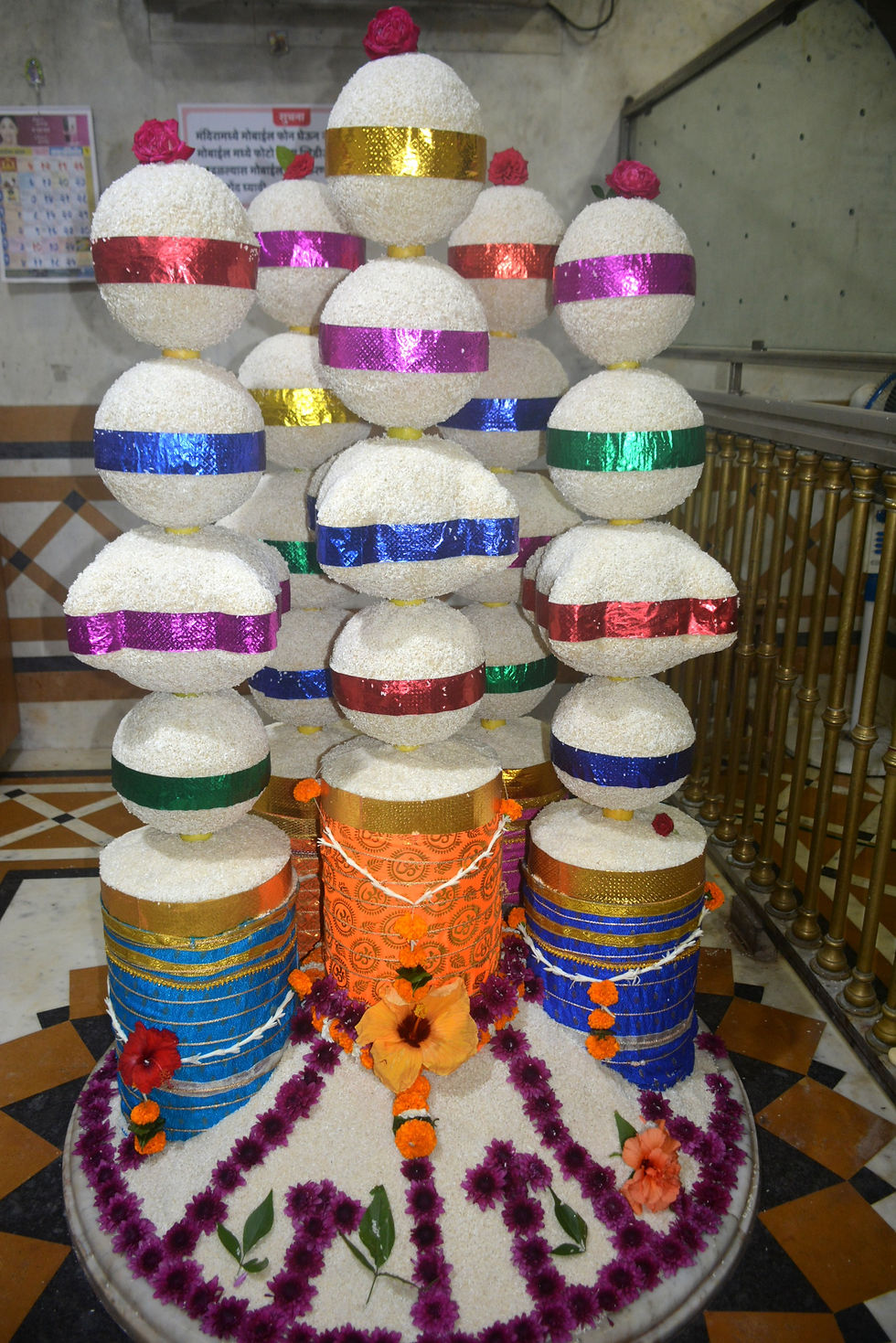The Famous Shravan Yatra of Otur: Written by Dr. Pravin Dumbre
- Neel Deshpande
- Aug 18
- 4 min read
In ancient times, the town known as Uttamapur gradually came to be known as Otur, a name now celebrated far and wide. Located at the northern end of Pune district, on the highway between Junnar and Kalyan, this town is rich in traditions of literature, art, sports, spirituality, wrestling, and education.

On its northern and eastern sides are the smaller ranges of the Sahyadri hills. Nearby flows the Mandvi River, which originates in the Malshej Ghats and nourishes the land with fertility. Just two kilometres north of the village, on the banks of the river, stands the grand and sacred temple of Lord Kapardikeshwar, renowned across Maharashtra. Pilgrims believe that the Mandvi carries the same sanctity as the Ganga. Close to the temple lies the samadhi of Sant Chaitanya Maharaj, the spiritual guide of Saint Tukaram, who is believed to have given Tukaram the eternal chant of Ram Krishna Hari at this very place.
Through the generous contribution of Shri Ramesh Shivajirao Dumbare of Otur, the temple complex was recently renovated with elegant stone architecture, making it both beautiful and spiritually vibrant. The site has since been recognised as a B-grade pilgrimage site. The Kapardikeshwar Devdharm Sanstha Committee, under the leadership of Shri Anilsheth Shrikrishna Tambe, takes care of the planning, decoration, and management of the annual fair or yatra.
Otur’s Heritage and Natural Beauty
The village is still surrounded by three historic stone gateways, preserved carefully by the locals. Otur includes twelve neighbourhoods, and nearby lie Munjaba Hill and a smaller hillock called Suthumbya. During the rainy season of Shravan, the entire area turns lush and green, with mist hanging beautifully over the hills.
It is in this scenic setting that the grand Kapardikeshwar Yatra is held every Monday in Shravan. Depending on the calendar, there are sometimes four Mondays in Shravan, and occasionally five. A special ritual during this festival involves creating rice mounds, called pindis, beside Shiva’s idol in the temple. Families contribute rice for this purpose. On the first Monday, one mound is made, on the second two mounds, on the third three, continuing according to the number of Mondays.

Spiritual Devotion and Traditions
Shravan is considered a holy month filled with festivals, fasts, and prayers. Every household is deeply rooted in devotion. Mondays are sacred, and many observe fasts. Some choose to go without food altogether, while others eat light dishes like khichdi, bananas, or sweet potato.
The weekly fair is not only about devotion but also about community and food. Every Monday, a vegetable market sets up in the morning. In the evening, families break their fasts with traditional meals such as rice and dal, chapatis, fenugreek or bitter gourd curry, and crispy aloo vadas. Jalebi sold by local shopkeepers and entrepreneurs is a special attraction and an important part of the yatra feast.
From early dawn, devotees gather at the temple, raising chants of Dnyanoba Tukaram and Vitthala Vitthala. School children join in processions, dressed as saints and deities. Shravan also brings the festival of Nagpanchami, and in earlier days, children would sell pictures of Nag Narsoba in the fair. Even today, young boys apply sandalwood paste on the foreheads of devotees, marking them with devotion to Lord Shiva.
Competitions, Wrestling and Celebrations
On the second Monday, traditional bhajan singing competitions are held where devotional music groups perform from early morning until late at night.
The third and fourth Mondays are the grandest of the festival. People who live away in cities like Pune, Mumbai, Nashik, or even Ahmedabad return home especially for these days. Wrestling, or kushti, is the highlight. This tradition has been preserved for centuries, with wrestlers not only from local villages but also from regions such as Sangli, Kolhapur, and Paithan coming to compete.
The wrestling begins only after the main villagers take the instruments, proceed to the temple, and offer prayers to Lord Kapardikeshwar. Young wrestlers get sweets as prizes, while experienced wrestlers are honoured with shields, maces, turbans, or cash rewards. Enthusiastic commentary keeps the crowds energised, and when a young wrestler performs a brilliant move, he is lifted onto the shoulders of the people and celebrated with additional prizes.
Earlier, the open-air arena often faced interruptions by rain, with spectators watching under umbrellas. Today, thanks to the construction of the Shri Krishna Ramji Tambe Wrestling Stadium, the arena has a roof and enclosed walls, ensuring uninterrupted contests even during heavy showers.
Joy of the Yatra
For families, the fair is also a time for hospitality. Relatives and friends are welcomed warmly, and the houses remain busy with cooking and preparations. For women, who often miss the main fair due to household duties, a special arrangement has long been in place. After the last Monday of Shravan, a Shili Yatra is held on Tuesday for them, now located outside the village due to the large crowds it attracts.
This day blends tradition with entertainment. There are swings and rides for children, Ferris wheels for the youth, and attractions like magic shows and stunt performances. Numerous stalls sell sweets such as pedhas, sugar candies, jaggery sweets, and crispy gud shev. Street food, such as spicy bhel and pav bhaji, adds to the delight.
As the evening progresses and the wrestling events end, crowds head to the jalebi stalls to buy sweets to take home. Long queues at these shops have become one of the lasting images of the Otur Yatra, a festival that beautifully weaves together devotion, tradition, hospitality, and joy.






Comments